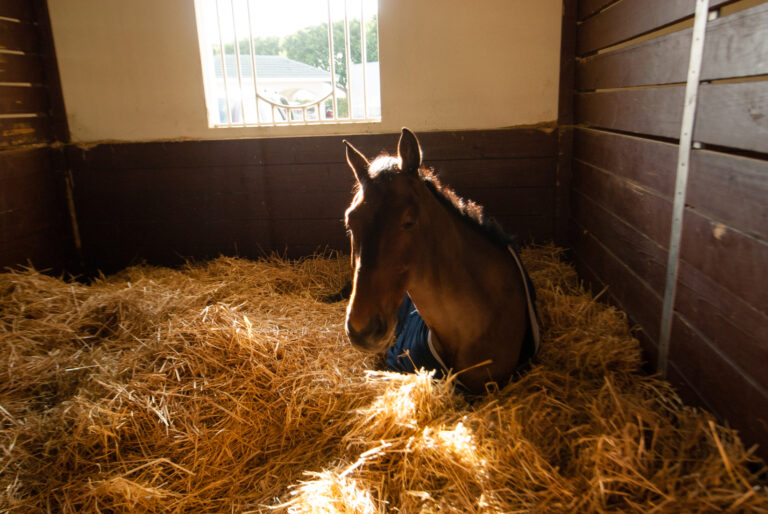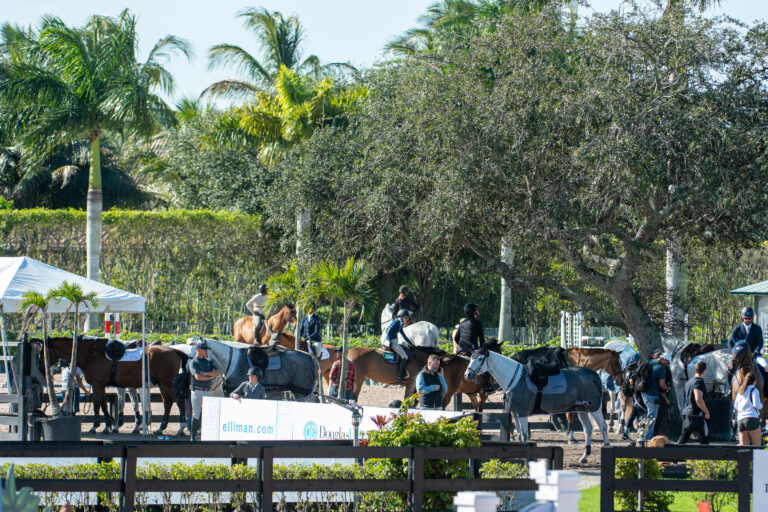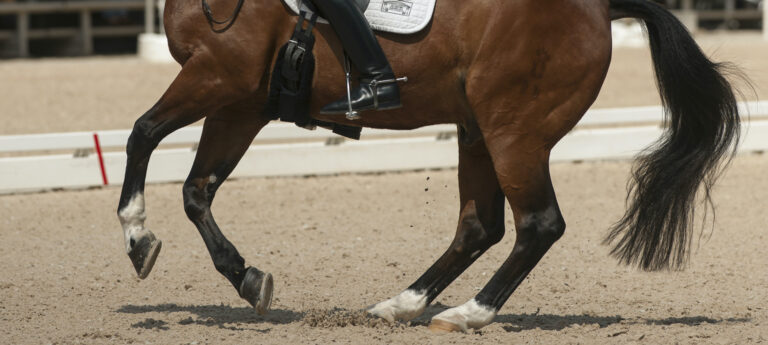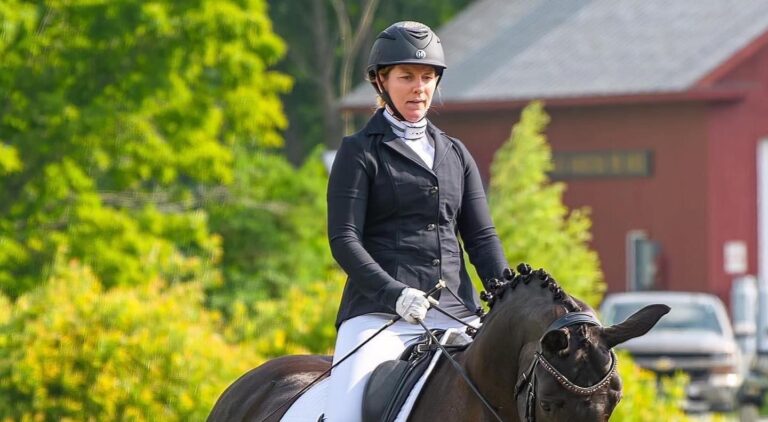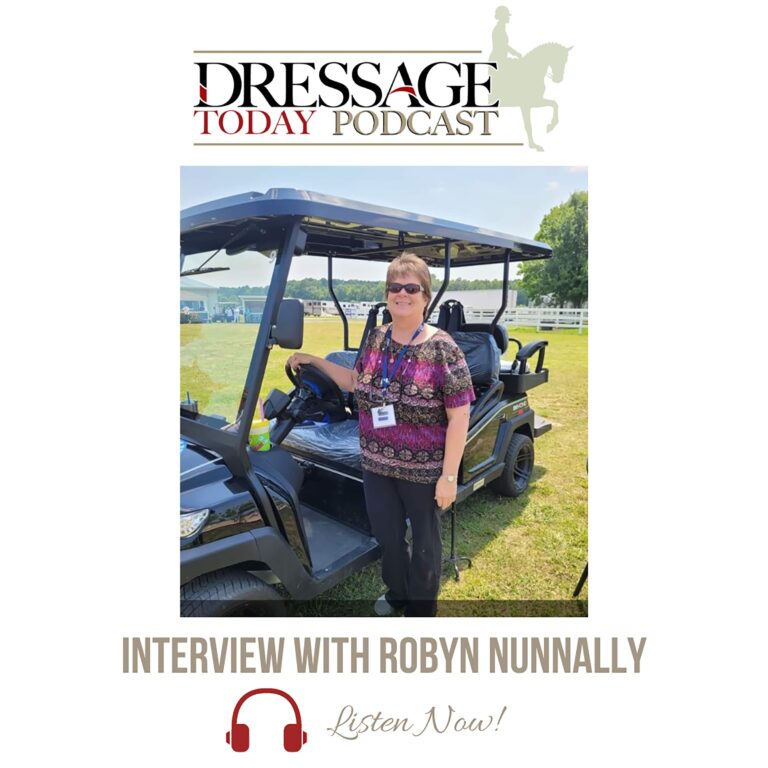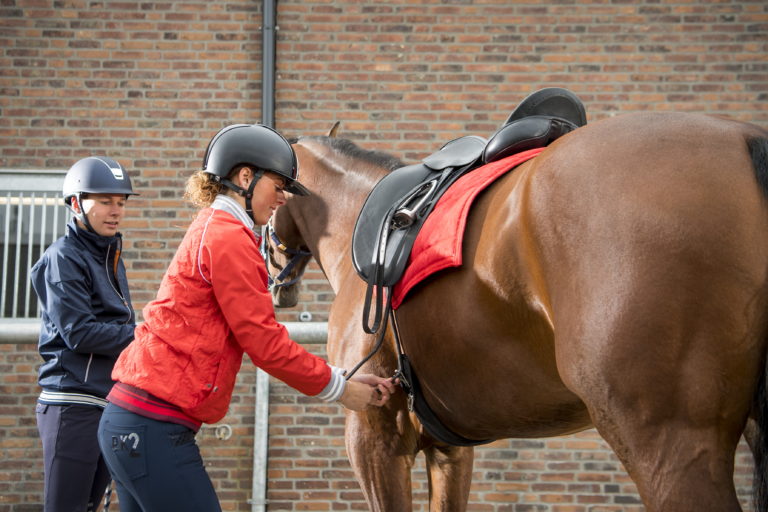
Question: I am new to dressage and am working on the idea of connection with my horse. It’s coming along pretty well, but at some point in our rides she will pull the bit up into her back teeth and crunch on it. She’s done it with every bit she’s ever had: She’s now in a loose-ring bit with a lot of tongue relief that fits her properly. I’ve tried lowering the bit, raising it, tightening the cavesson, raising the cavesson, lowering it. She is leaving marks in the bit but not sharp edges or gouges. My other mare does this as well. How can I keep her from biting her bit?
Name withheld by request
Sean Cunningham
Answer: It sounds as though you’ve been quite thorough in making sure your tack is fitted comfortably and appropriately, so I don’t think that’s where your issue lies. Another thing you should be sure to check is your mare’s teeth. Have your vet or dentist check her mouth to make sure there are no issues. Sharp points, hooks or even wolf teeth (not common but not unheard of in mares) could cause problems with accepting the bit. Once you’ve ruled out her teeth, the final answer lies within your question.
As you’ve stated, you are rather new to dressage and are still working on riding with a good connection. I have a horse myself, a mare, who crunches on the bit. However, once we are through the warm-up phase of our workouts and she is really committed to the work and the contact, the aggressive chewing goes away.
You see, when horses are truly through and on contact, they are focused on the work they are being asked to do. They aren’t spooking or looking around or getting overactive in the mouth and chomping the bit as you’ve described. Obviously, this is frequently not an easy thing to accomplish. Some horses like a stronger contact, others like a softer one. On any given day, some horses are focused and working into connection rather quickly, others never really quite get there for whatever reason. It can change for each horse day by day, which is why connection is the third element of the Training Scale instead of the first. You have to have the rhythm and relaxation and basic obedience to the aids before you can expect a horse to be steady in the connection. If you try to establish a connection before that, you’ll just end up backing the horse off, requiring you to spend a lot more effort on your driving aids. Without a steady connection, you could actually take your horse out of balance if you are jerking, snapping or pulling on the reins. As you work to compress your horse from back to front, you have to have a steady contact or she will get more strung out and on the forehand as you drive her forward.
So, all that being said, you need to keep working to establish that good connection with your mare. When you are warming up, check your tempo. Does it stay consistent and balanced or does it vary a fair amount? If you have trouble gauging your tempo, you can either play music that closely matches her ideal footfall rhythm or you can even get metronome apps on your smartphone that you can listen to while you ride. Does your horse move forward energetically or is she just dragging her feet along? Is she submissive and relaxed or is she trying to take over and run through your aids?
When you are warming up, be sure to ride plenty of transitions. Be careful, though, not to get in the trap of just riding them for the sake of riding them. You must actually accomplish the objective with them, which is to bring the hind legs more underneath in the downward transition, thereby creating more thrust in the departure. Again, the contact must start to contain that thrust or you will create a horse that just runs through the hands and gets strung out.
Ride leg yields in your warm-up, even as you work up the levels. It is a wonderful exercise to supple the back and get the hind legs reaching more underneath. Another word of caution: Don’t assume that because you are going sideways, it’s a leg yield and it will help. The point is to work to increase the stride length and improve suppleness and balance. If you go over too quickly or crookedly, you can actually shorten and increase the tempo of the stride and cause the horse to lose her balance.
Of course, through all of this work, you must also be aware of your hand position. Pulling back or down or tightening your elbows, shoulders or wrists will all cause tightness in your horse, which will also prevent the throughness you need to establish a better connection. That’s why it is so crucially important to have good help on the ground to assist you along the way and keep you on the right track.
I wish you the best of luck in your continued experiences, and just keep after it. You should notice the chomping go away in your workouts more and more as you improve that connection.
Sean Cunningham is a USDF bronze and silver medalist and silver freestyle-bar recipient. He owns STC Dressage in Los Angeles, California.



